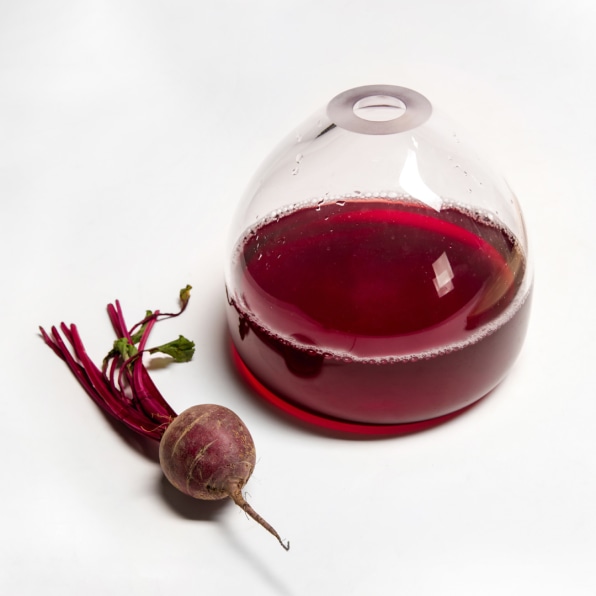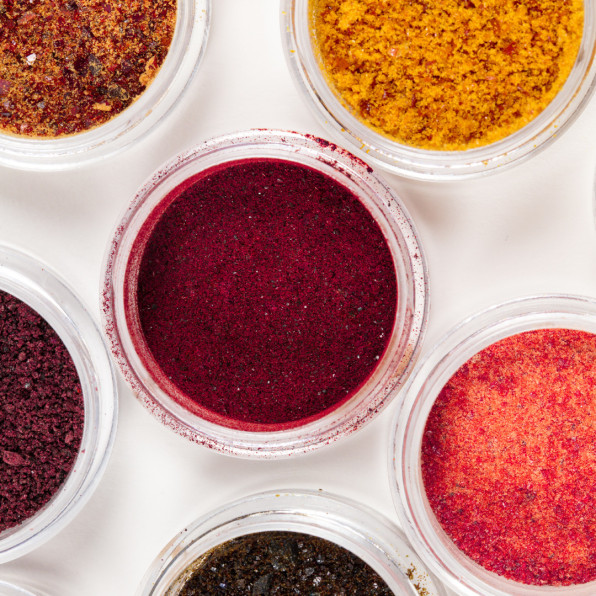In the United States alone, more than 15 million pounds of textile waste is generated each year. In response to the environmentally harmful practices of fast fashion a business model that prioritizes quick and cheaply made garments over long-lasting quality and fair workers wages some brands and designers are making ethically sourced materials and manufacturing processes a production requirement.
advertisementadvertisementNicole Stjernsward, a London-based design technologist, has developed a system for dyeing fabric that could soon become a critical device for companies divesting from harmful production practices. Kaiku is a project that turns fruit and vegetable peels into powder pigment. Through the use of vaporization technology, Stjernsward s system can essentially convert what you d normally compost into vivid colors, ripe for fabric dyeing.
Paint used to be made with local materials using recipes that only required a few ingredients. Most of the ingredients were things commonly found in your kitchen, such as casein and quark from milk, says Stjernsward. While mineral pigments were historically made with natural sources like soil and clay, more exotic colors were extracted from local plants or wildlife, she adds.
Today, paint companies focus on having the most durable and vibrant pigments, which are often full of inexpensive petrochemical feedstocks, which are essentially used to derive the paint s ingredients.
The downside to modern paint s performance is its impact on the environment during both paint manufacturing and at the end of a product s life cycle. For example, pigment waste often leaks into surrounding landscapes, poisoning water and soil for humans and animals, says Stjernsward. Beyond paint s effect on the environment, synthetic colors are widely perceived to be hazardous to the health of humans and animals.
Kaiku provides a necessary alternative to these chemical colors by using food waste as a source of sustainable color creation.
advertisement [Photo: courtesy Nicole Stjernsw rd]
[Photo: courtesy Nicole Stjernsw rd]Stjernsward s system began as an exploration of oil painting, and she interviewed several artists about the materials used in their work. After realizing how toxic most of these pigments are, the designer started researching bio-derived color, which is made from plants, flowers, and barks.
Kaiku s ability to alchemize carbon-based materials into pigment relies on vaporization technology; though this method is commonly used by larger companies, Stjernsward s product downsizes this approach for an everyday user. As it stands, Kaiku only generates powder pigments a decision Stjernsward made in order to guarantee a longer shelf life.
I found that natural dyes mold quickly and need to be used instantly, which is impractical and frustrating for artists and textile designers. It was this insight that informed my decision to figure out a mechanical method for drying the dyes, she says. Once I had figured out how to remove the water which causes the mold, I had a useful dry powder that could be rehydrated into a dye.
The beauty of the vaporization is that it removes the liquid component from the boiled, water-rich fruit and vegetable peels, which allows the resulting pigments to last for months. These powder pigments are rehydrated by mixing them with paint materials like egg tempera, allowing the color to be applied as paint on a canvas or as a dye on garments.
 [Photo: courtesy Nicole Stjernsw rd]
[Photo: courtesy Nicole Stjernsw rd]Almost anything that grows can be used to create dyes and color, but some are much better than others for this task, says Stjernsward. Fruits and vegetables with high water content and thin peels don t work as well, as they don t contain much color in them and produce very weak or nonexistent color, such as cucumber.
Traditional crops like indigo and woad were often used to create fabric dyes because of their rich color. While natural materials like wood bark can be passed through Kaiku, its toughness demands that it be soaked for a week or more before processing. But as for food peels that are commonly found in the home, Stjernsward says: Anything with thick rinds or large seeds can be used to extract useful color compounds. Additionally, I ve had really good results with fruits that have a high tannin content (the same thing that makes wine red) such as avocado and grapefruit peels, which produce nice red and warm orange tones.
advertisementDuring the development of this food waste vaporization system, the environmentally conscious designer says she had some challenges getting the water pressure just right. And though she s continuing to refine just how her product generates vivid vegetable dyes, clothing brands and textile designers have already expressed interest in finding ways to work Kaiku into their production pipelines. Stjernsward says: If we re moving toward a circular economy, we need to think about ways to make color more recyclable, which is why I think natural color is good for this as it fades over time.
advertisementadvertisementadvertisementFast Company Daily Newsletter
Sign UpReceive special Fast Company offers.See All NewslettersVideoImpact





